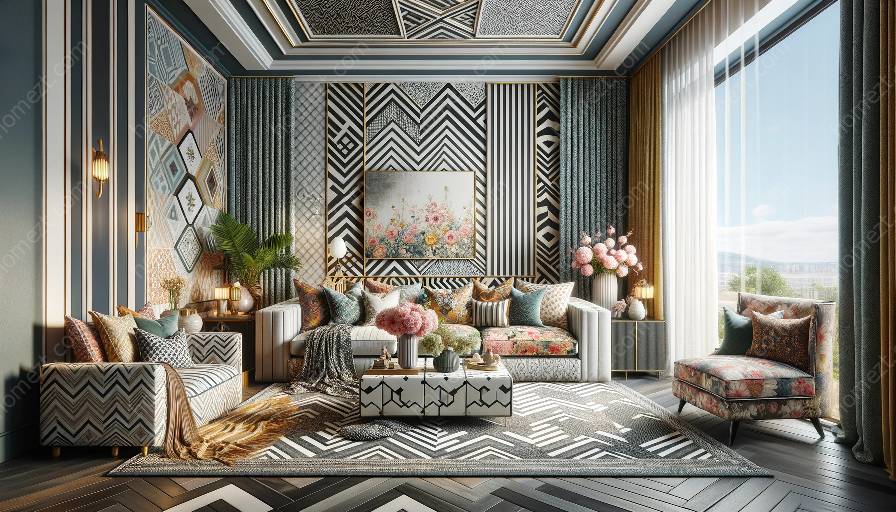Pattern mixing in decorating is a design concept that has been influenced by historical and cultural factors spanning centuries. This article explores the rich and diverse origins of pattern mixing, its evolution over time, and how it has been incorporated into decorating.
The Origins of Pattern Mixing
Pattern mixing has its roots in the artistic expressions of various cultures throughout history. Ancient civilizations such as the Egyptians and Greeks incorporated intricate patterns into their textiles and pottery, often combining different motifs to create visually captivating designs.
During the Middle Ages in Europe, tapestries and textiles adorned with elaborate patterns were highly prized and showcased intricate combinations of florals, geometric shapes, and animal motifs. These patterns were heavily influenced by religious and mythological symbolism.
In Asia, traditional patterns such as paisley, ikat, and batik have been passed down through generations, with each culture adding its own unique spin on pattern mixing. These patterns often hold deep cultural significance and are celebrated for their craftsmanship and symbolism.
The Renaissance and Pattern Mixing
The Renaissance era marked a significant period in the evolution of pattern mixing. Artists and designers drew inspiration from classical motifs and patterns, blending elements from Greek, Roman, and Islamic art to create ornate, harmonious designs.
During this time, pattern mixing became synonymous with luxury and sophistication, with opulent textiles and wall coverings featuring intricate combinations of patterns, reflecting the wealth and status of the aristocracy.
The Influence of Global Trade
Global trade and exploration in the 17th and 18th centuries brought an influx of exotic textiles and patterns from distant lands. This intermingling of diverse cultural influences sparked a new era of pattern mixing, as designers and decorators embraced the fusion of different styles and motifs.
Asian-inspired chinoiserie and Indian prints became highly sought-after, leading to a fusion of Eastern and Western patterns in decorating. The vibrant colors and intricate patterns of these textiles added a sense of exoticism and allure to interior spaces.
The Victorian Era and Eclectic Mixing
The Victorian era was characterized by an eclectic approach to pattern mixing, as it embraced a wide range of design influences. Victorian interiors often featured an abundance of patterns, from florals and damasks to stripes and plaids, creating a vibrant and layered aesthetic.
This era also saw the rise of pattern books and design publications, which allowed for greater accessibility to a variety of patterns and encouraged experimentation with mixing different motifs and styles.
Modern Revival and Contemporary Trends
In the 20th century, the modernist movement initially steered away from excessive pattern mixing, favoring clean lines and minimalism. However, the revival of interest in historical design styles, such as Art Deco, Art Nouveau, and Mid-century Modern, brought pattern mixing back into the spotlight.
Today, pattern mixing in decorating is celebrated for its versatility and creativity. Designers and homeowners are embracing a mix-and-match approach, combining diverse patterns such as florals, stripes, and geometric prints to create visually engaging and dynamic interiors.
Incorporating Pattern Mixing into Decorating
When incorporating pattern mixing into decorating, it's essential to consider the scale, color palette, and overall aesthetic of the space. Mixing patterns of varying scales, such as pairing a large floral print with a smaller geometric design, creates visual interest and balance.
Additionally, playing with complementary or analogous color schemes can help unify diverse patterns within a room. For example, pairing a bold, colorful pattern with a more subdued, tonal pattern can create a harmonious look.
Ultimately, pattern mixing allows for endless possibilities in decorating, reflecting the rich tapestry of historical influences and cultural heritage that continue to inspire and shape contemporary design aesthetics.






































